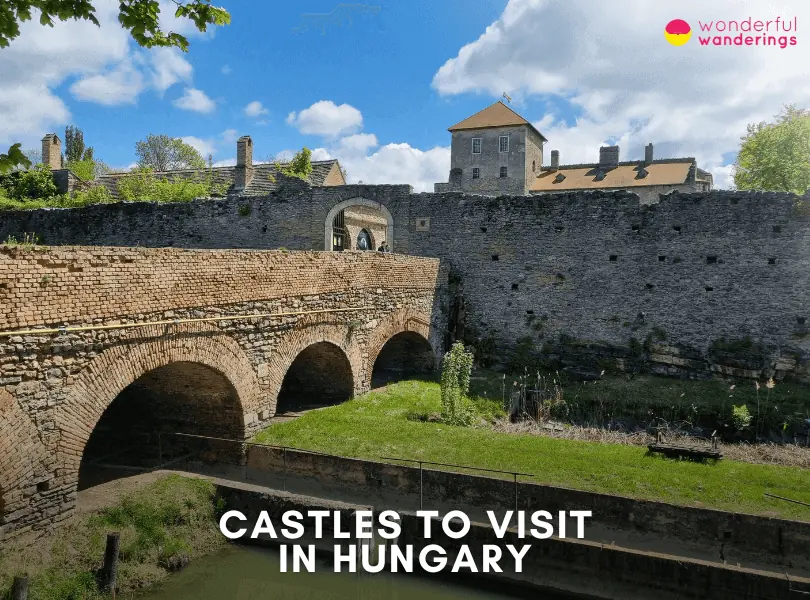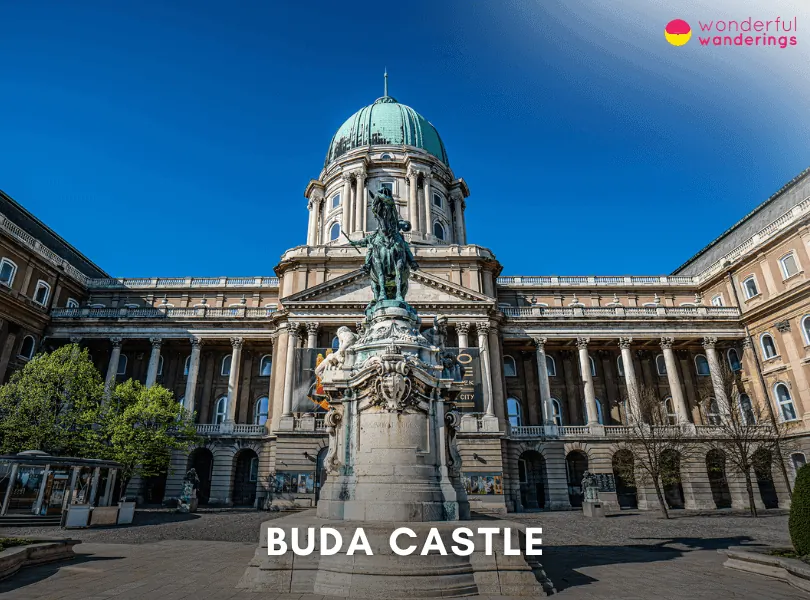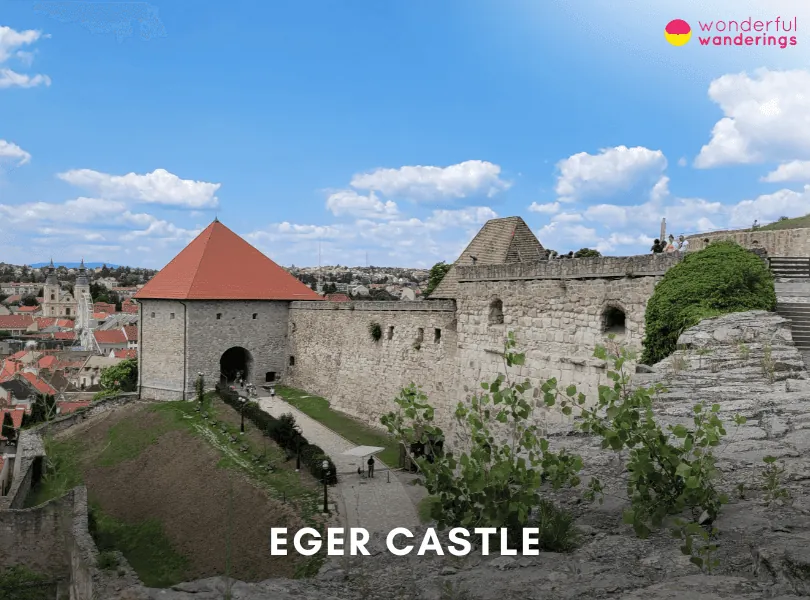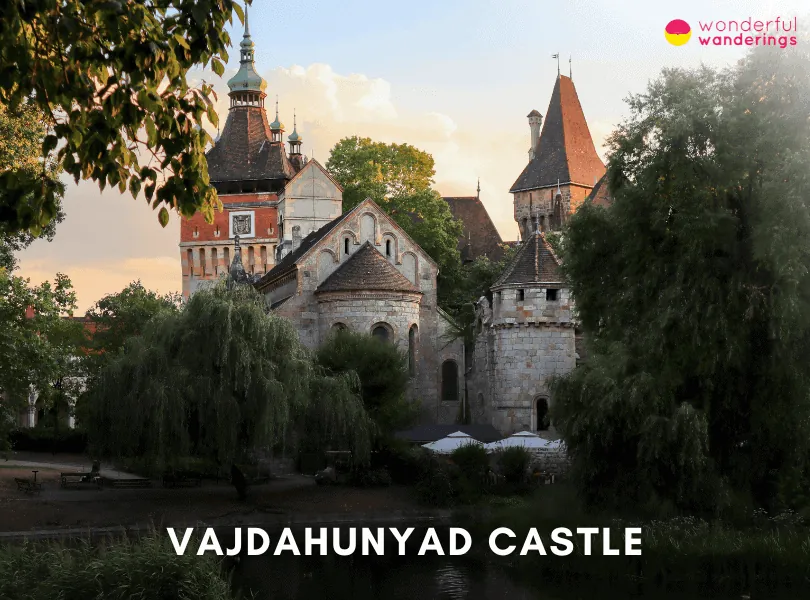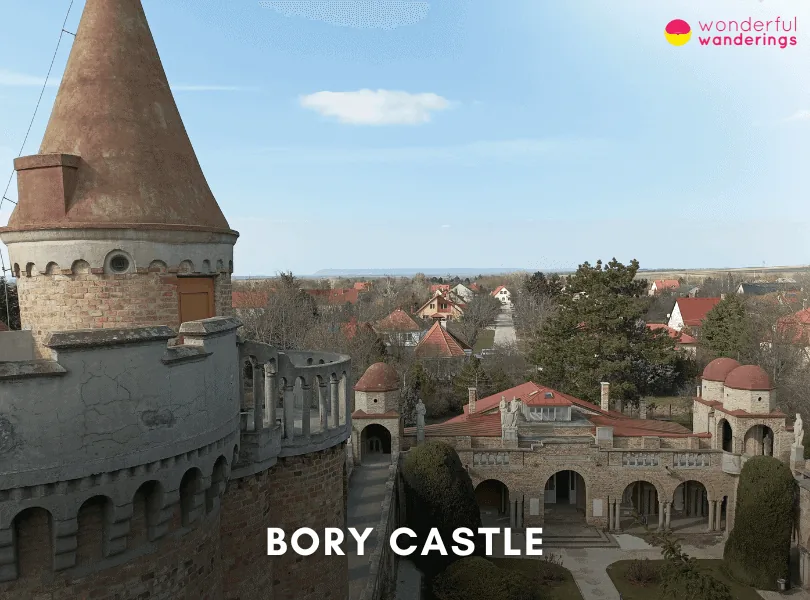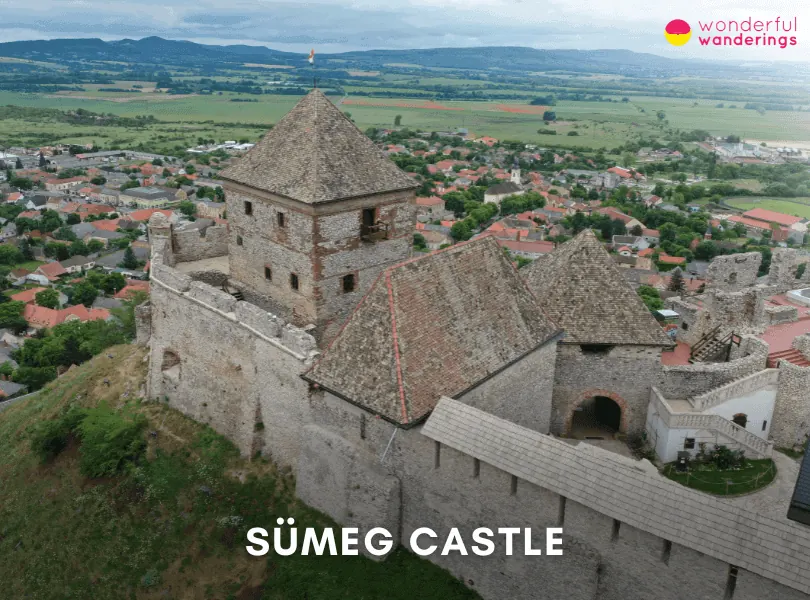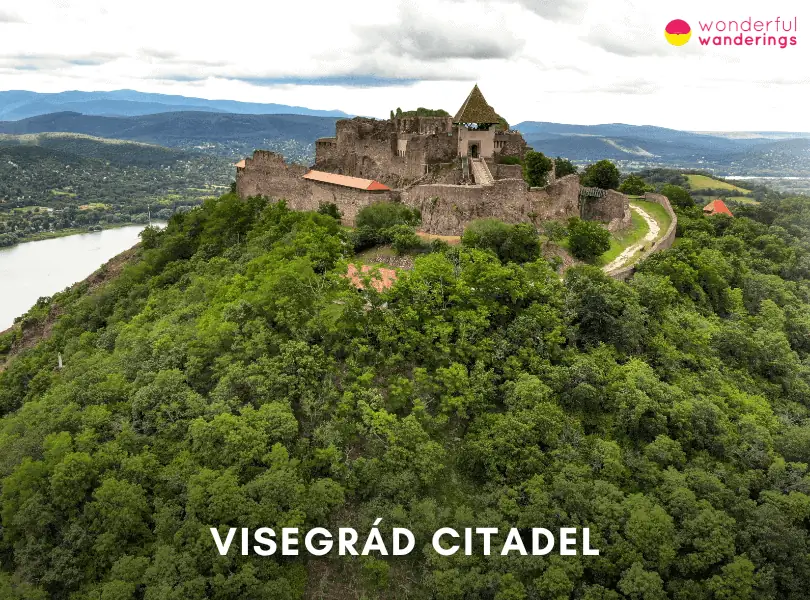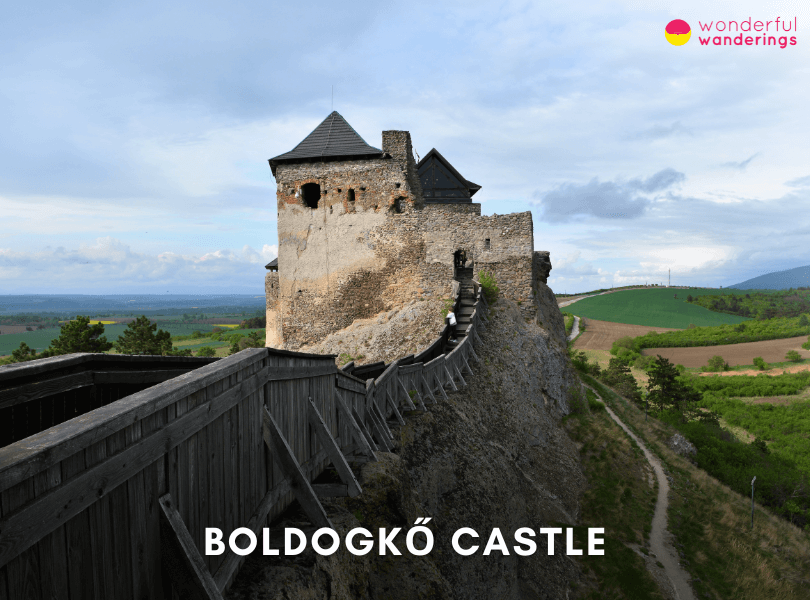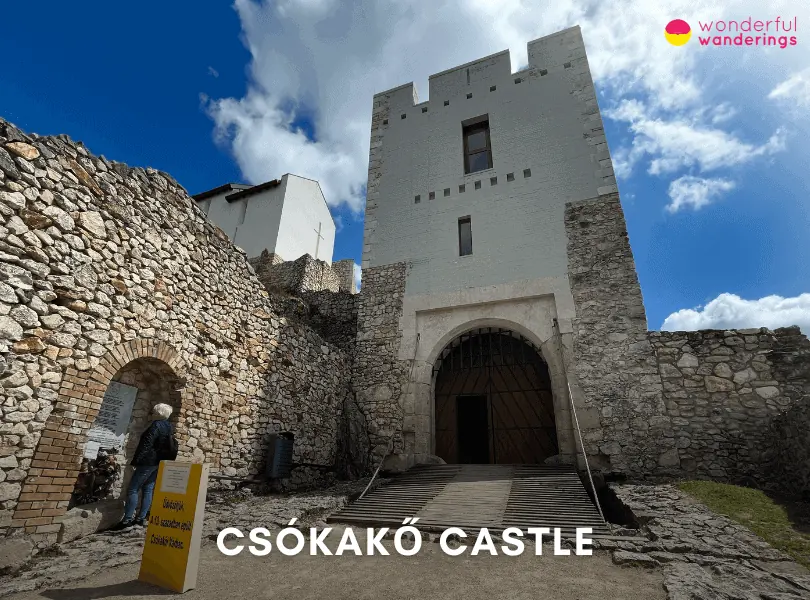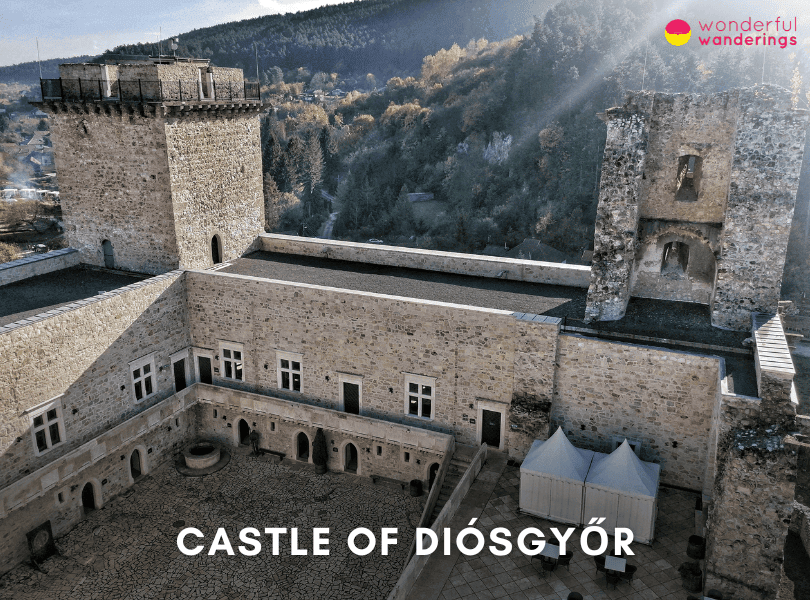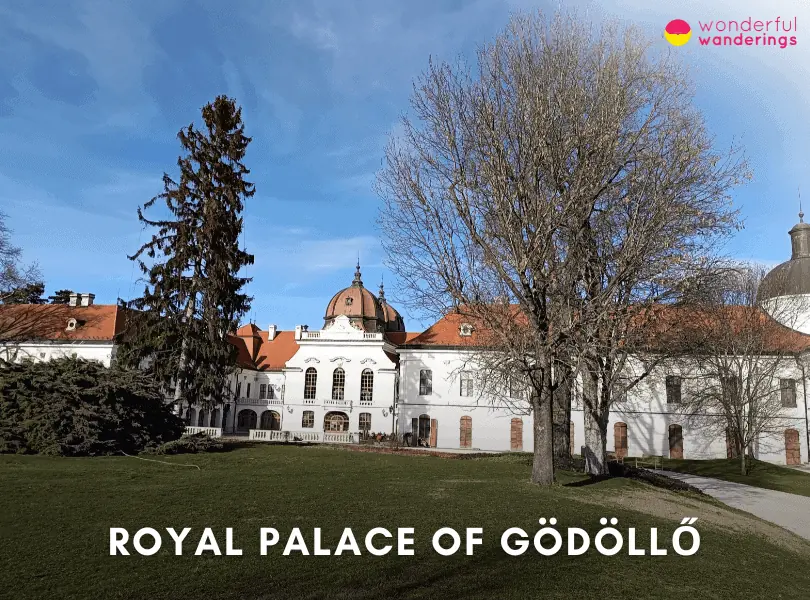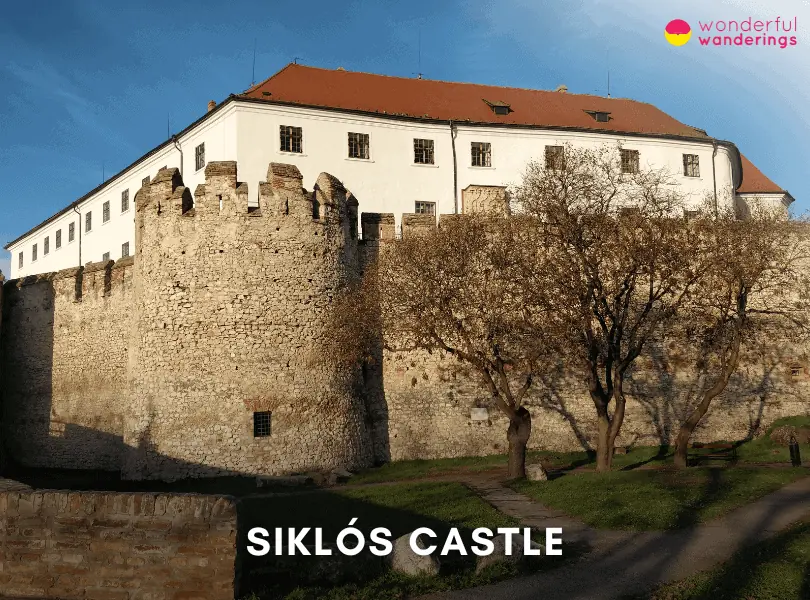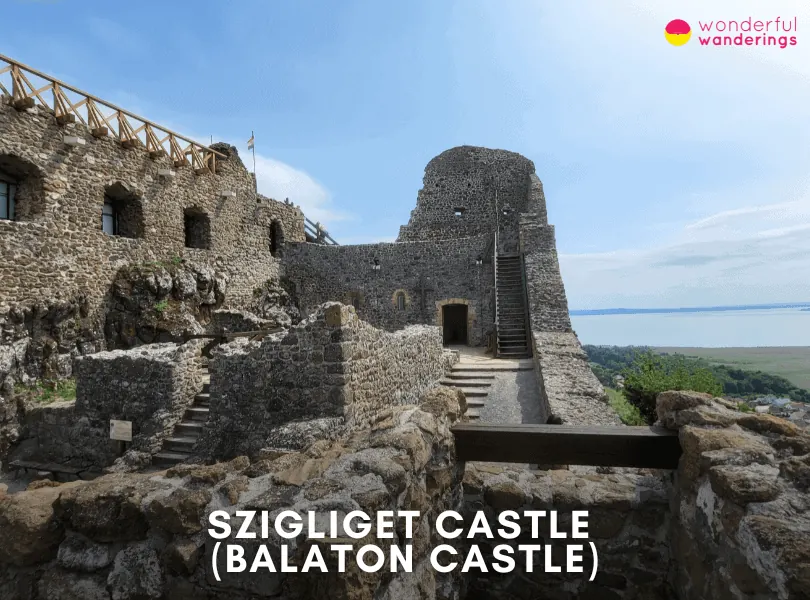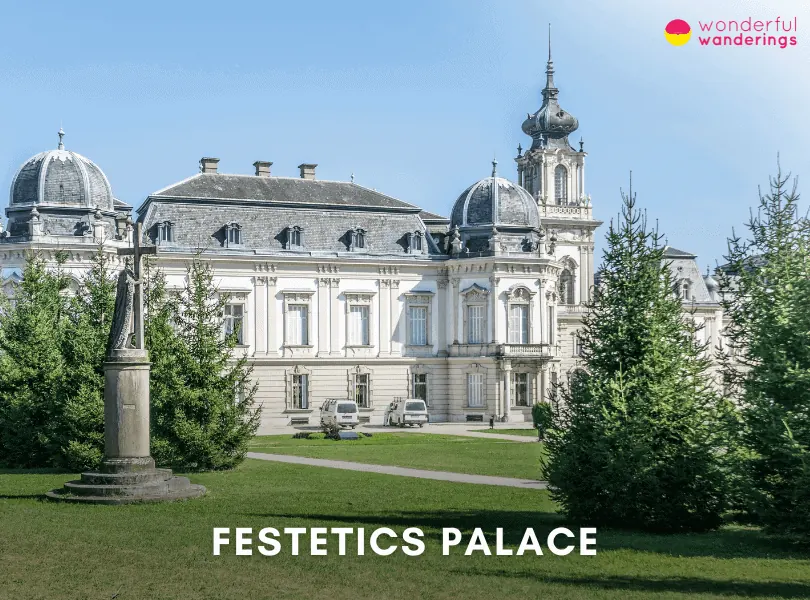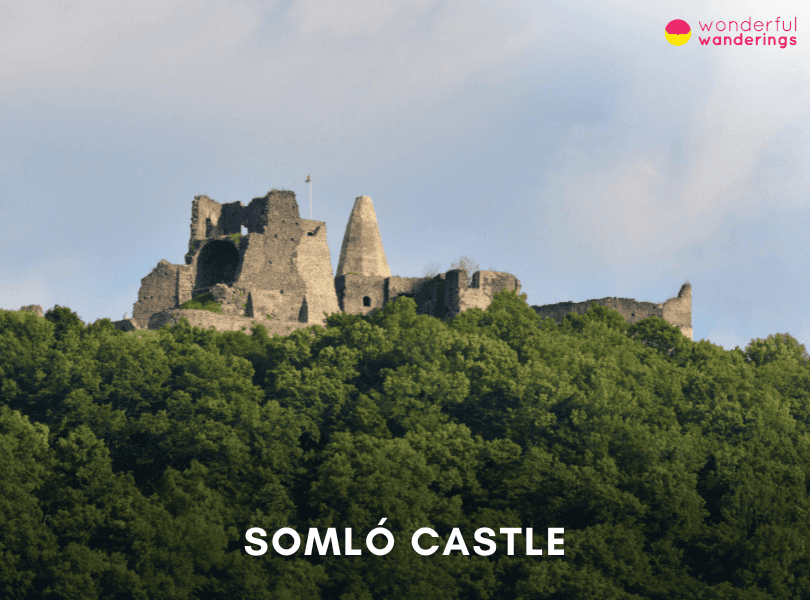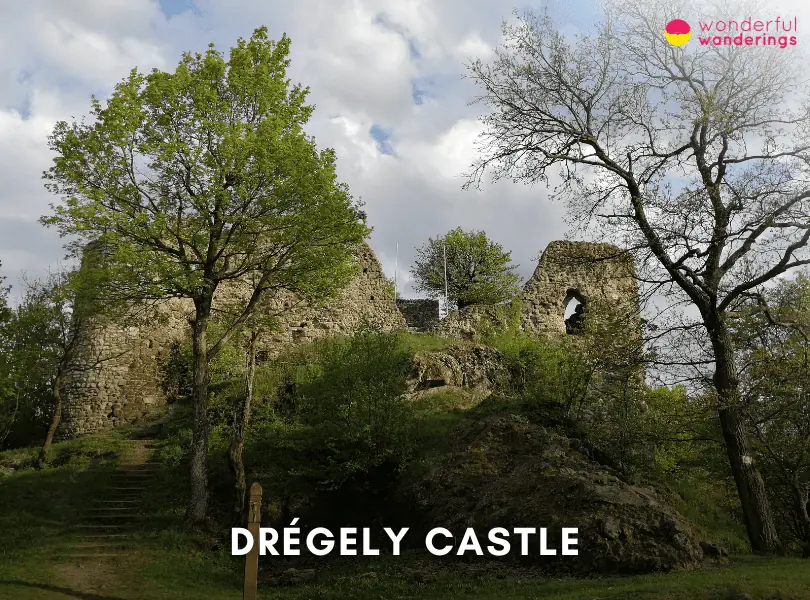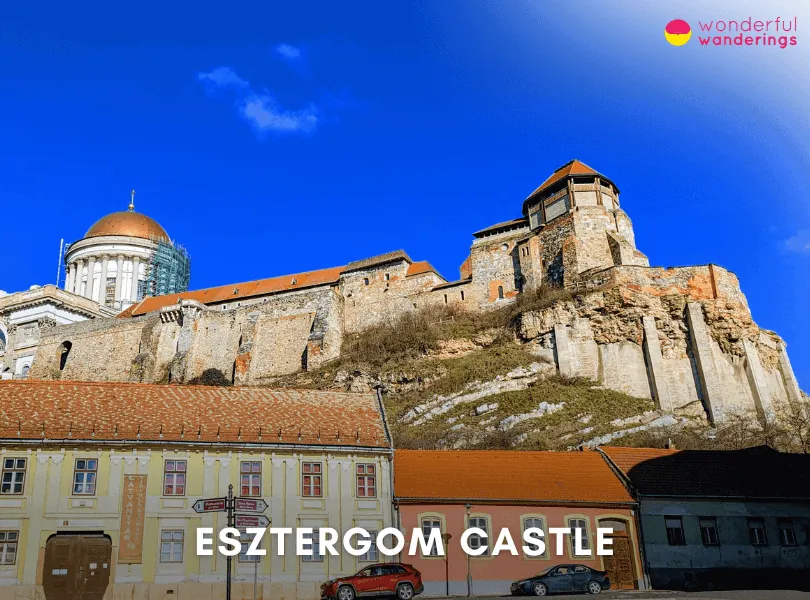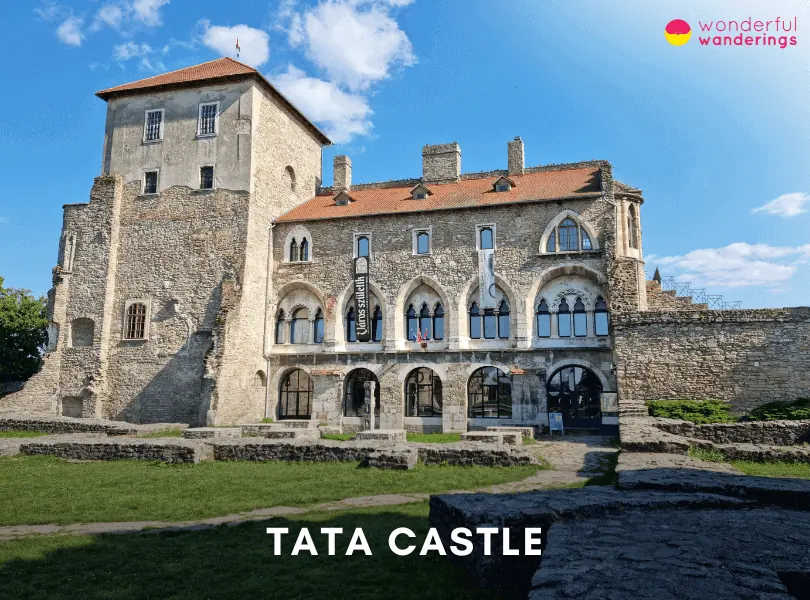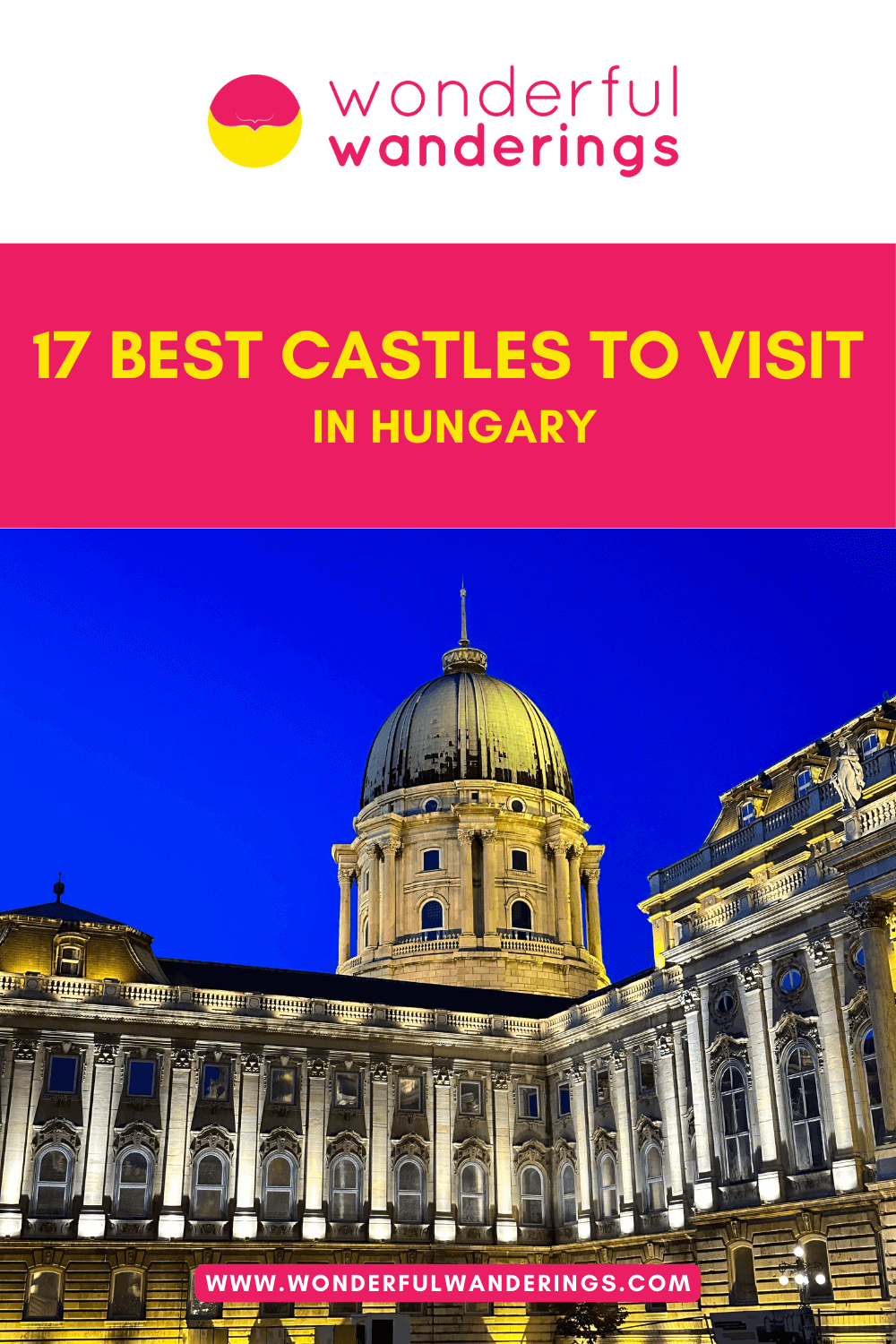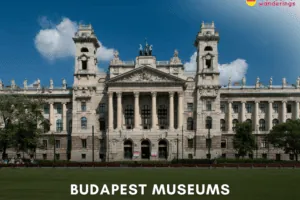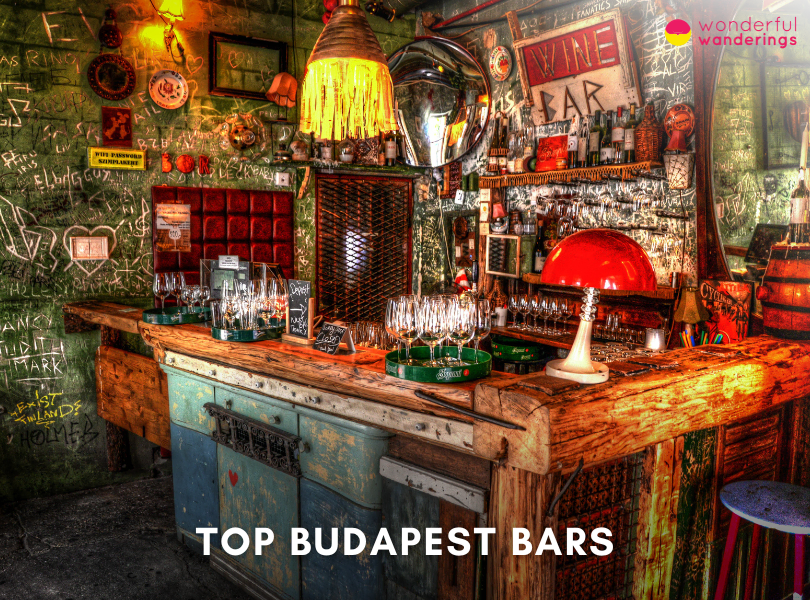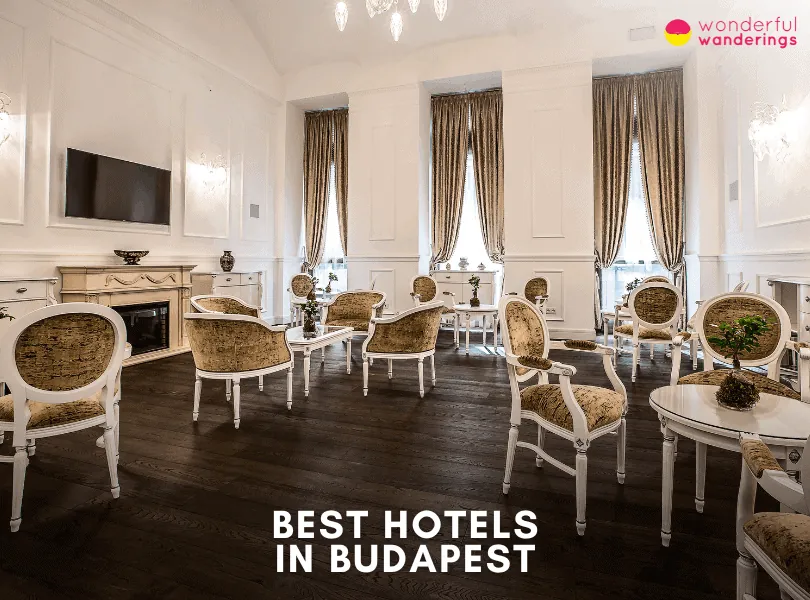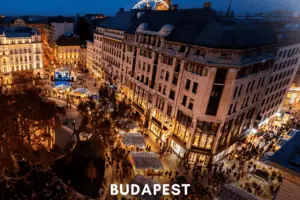Hungary has a rich and diverse heritage and its castles are a testament to that. The castles in Hungary reflect the different historical periods, cultural influences and architectural styles that shaped the nation. From medieval fortresses to royal palaces, the castles in Hungary offer a glimpse into the past and present of this fascinating country. The first castles in Hungary were built in the 13th century, after the Mongol invasion of 1241 to 1242. The Hungarian kings and nobles needed to protect their lands and people from further attacks, so they built stone castles on strategic hills and mountains. Some of the oldest and most famous castles from this era are Buda Castle, Eger Castle and Sümeg Castle.
In the 16th and 17th centuries, Hungary was divided and occupied by the Ottoman Empire and the Habsburg Empire. The castles in Hungary became the scenes of fierce battles and sieges and the symbols of resistance and loyalty. Most castles were destroyed or damaged during this time, but some were renovated and expanded. Vajdahunyad Castle was built in the 19th century as a tribute to the 1000th anniversary of the Hungarian conquest of the Carpathian Basin. Today, the castles in Hungary are among the most popular tourist attractions and cultural heritage sites. They showcase Hungary’s history, art and architecture and the stories and legends of the people who lived and fought in them. The castles in Hungary are not only monuments of the past but also sources of inspiration and pride for the present and future generations.
Listed below are the best castles to visit in Hungary.
- Buda Castle. Buda Castle is a historical castle and palace complex of the Hungarian kings in Budapest. It is located on the southern tip of Castle Hill, overlooking the Danube River. The castle is part of the Budapest World Heritage Site, which was declared in 1987.
- Eger Castle. Eger Castle is a historical fortress in Eger, Hungary. It is famous for its heroic defense against the Turkish invasion in 1552. The castle has several museums, exhibitions and attractions that showcase its rich past. The first castle was built in the 11th century on a hill near Eger but was destroyed by the Mongols in 1241.
- Vajdahunyad Castle. Vajdahunyad Castle is a castle in Budapest, Hungary. It is located in the City Park, near a lake that can be used for boating or skating. The castle was built in 1896 for the Millennial Exhibition, which celebrated the 1,000th anniversary of the Hungarian conquest of the Carpathian Basin.
- Bory Castle. Bory Castle is a unique group of buildings in Székesfehérvár, Hungary. It is made of concrete and has various architectural styles, such as Scottish, Romanesque and Gothic. Bory Castle is not a historical monument but a personal creation of Jenő Bory, a Hungarian sculptor and architect. Jenő Bory bought the land of the castle in 1912, where there was only a press house and a wine vault among grape and fruit trees.
- Sümeg Castle. Sümeg Castle is a medieval fortress in Hungary near Sümeg. It was built by King Béla IV in the 13th century and later given to the Archdiocese of Veszprém. The castle stands on a hill that is 20 kilometers (12 miles) north of Lake Balaton, the largest lake in Central Europe.
Contents
- 1. Buda Castle
- 2. Eger Castle
- 3. Vajdahunyad Castle
- 4. Bory Castle
- 5. Sümeg Castle
- 6. Visegrád Citadel
- 7. Boldogkő Castle
- 8. Csókakő Castle
- 9. Castle Of Diósgyőr
- 10. Royal Palace Of Gödöllő
- 11. Siklós Castle
- 12. Szigliget Castle (Balaton Castle)
- 13. Festetics Palace
- 14. Somló Castle
- 15. Drégely Castle
- 16. Esztergom Castle
- 17. Tata Castle
1. Buda Castle
Buda Castle is a historical castle and palace complex of the Hungarian kings in Budapest. It is located on the southern tip of Castle Hill, overlooking the Danube River. The castle is part of the Budapest World Heritage Site, which was declared in 1987. The first royal residence on Castle Hill was built by King Béla IV of Hungary in the 13th century. It was destroyed and rebuilt several times over the centuries, reflecting the unstable history of Hungary. The current palace was mostly constructed between 1749 and 1769 in a Baroque style.
Buda Castle has six wings, labeled from A to F, arranged around the Lion Courtyard. The wings house various cultural institutions, such as the Hungarian National Gallery, the Budapest History Museum and the National Széchényi Library. The Hungarian National Gallery occupies four wings of the palace, displaying artworks by Hungarian artists from the Middle Ages to the present day. The gallery also contains the former throne room and the coronation jewels of the Hungarian kings. The Budapest History Museum occupies the palace’s southern wing, covering the city’s history from prehistory to modern times. The museum also features some ruins and reconstructions of the medieval palace, such as the Gothic chapel and the Knights’ Hall. The National Széchényi Library occupies the western wing of the palace, holding a copy of every book published in Hungary. The library was founded in the early 19th century by Ferenc Széchényi, who donated his private collection of books and manuscripts.
Buda Castle is a palace and fortress that has witnessed many sieges and battles. The castle was besieged 31 times by various armies, such as the Mongols, the Turks, the Habsburgs and the Soviets. The most devastating siege was from 1944 to 1945 when the castle was reduced to rubble by the Soviet troops. The castle was extensively restored and reconstructed after World War II, preserving its historical appearance. The castle is surrounded by a network of gardens and courtyards, offering scenic views of the city and the river. Some notable attractions include the Matthias Fountain, the Fisherman’s Bastion, the Royal Palace and the Castle Garden Bazaar. The castle also hosts various cultural events and festivals throughout the year, such as the Budapest Wine Festival, the Festival of Folk Arts and the Night of the Museums.
Buda Castle is one of Budapest’s most popular tourist destinations, attracting millions of visitors every year. The castle is open to the public daily, from 10.00 am to 06.00 pm. The admission fee is 23€ ($25.07, £20.01) for adults, 11.5€ ($12.54, £10.01) for students and seniors and free for children under 6. The castle can be reached by bus, tram, funicular or on foot.
2. Eger Castle
Eger Castle is a historical fortress in the town of Eger, Hungary. It is famous for its heroic defense against the Turkish invasion in 1552. The castle has several museums, exhibitions and attractions that showcase its rich past. The first castle was built in the 11th century on a hill near Eger but was destroyed by the Mongols in 1241. The bishop of Eger decided to relocate the castle to a rocky hill in the city, where it still stands today. The new castle was expanded and fortified over the centuries, especially after the Ottoman Empire conquered most of Hungary in the 16th century.
The most glorious chapter of Eger Castle’s history was the Siege of Eger in 1552, when a small garrison of about 2,000 Hungarians, led by Captain István Dobó, resisted the attack of a Turkish army of more than 30,000 soldiers. The defenders used clever tactics, such as pouring boiling water and tar on the enemy and managed to inflict heavy casualties on the Turks. The siege lasted for 38 days until the Turks retreated. The victory symbolized national pride and courage for the Hungarians; however, Eger Castle could not withstand another siege in 1596 when the Turks returned with a larger and better-equipped army. After a month of fighting, the castle fell and Eger became part of the Ottoman Empire for 91 years. The Turks left their mark on the city, building mosques, baths and minarets. Some of these buildings still exist today, such as the Minaret of Eger, which is the northernmost minaret in Europe.
The Austrians liberated Eger Castle in 1687 but suffered further damage during the War of Independence led by Prince Ferenc Rákóczi II in the early 18th century. The Austrians blew up part of the castle in 1701 and later used it as a barracks and a prison. The castle gradually deteriorated until it was declared a national monument in 1846. In the 20th century, Eger Castle underwent several restoration and reconstruction works and became a popular tourist destination. Visitors can explore the castle’s walls, towers, bastions and dungeons and learn about its history and legends. The castle also hosts various cultural events, such as festivals, concerts and reenactments.
The main attraction of Eger Castle is the Dobó István Castle Museum, which displays the castle’s history from the Middle Ages to the 18th century, with exhibits of weapons, armor, coins, documents and paintings. The museum also features a wax museum, a cellar system and a panoramic city view. The other attraction is the Eger Picture Gallery, which houses a collection of Hungarian and European art from the 16th to the 20th century, including works by Mihály Munkácsy, Bertalan Székely and Gyula Benczúr. The gallery also organizes temporary exhibitions of contemporary artists.
3. Vajdahunyad Castle
Vajdahunyad Castle is a castle in Budapest, Hungary. It is located in the City Park, near a lake that can be used for boating or skating. The castle was built in 1896 for the Millennial Exhibition, which celebrated the 1,000th anniversary of the Hungarian conquest of the Carpathian Basin. Vajdahunyad Castle is not a single building, but a collection of copies of different landmarks from the history of Hungary. It showcases various architectural styles, such as Romanesque, Gothic, Renaissance and Baroque. The main inspiration for the castle was Hunyad Castle, also known as Corvin Castle, in Hunedoara, Romania. It was the residence of the famous Hungarian king Matthias Corvinus in the 15th century.
Vajdahunyad Castle has several interesting features, such as a statue of Anonymus, a medieval chronicler who wrote the Deeds of the Hungarians. There is also a bust of Béla Lugosi, a Hungarian-American actor who played Count Dracula in the 1931 film. The castle hosts various festivals, concerts and exhibitions throughout the year. It is also the home of the Museum of Hungarian Agriculture, the largest agricultural museum in Europe. Vajdahunyad Castle is open to the public every day except on Mondays. The entrance fee is 4€ ($4.36, £3.48) for adults, 2€ ($2.18, £1.74) for students and seniors and free for children under 6. The museum has different opening hours and prices, depending on the season and the exhibition. The museum also offers guided tours, audio guides and interactive programs for visitors.
Vajdahunyad Castle is easy to reach by public transport, as it is close to the Heroes’ Square, one of the main attractions of Budapest. There are several bus, metro and trolleybus lines that stop near the castle. The nearest metro station is Hősök tere (Heroes’ Square) on the M1 line. The castle is also within walking distance from other sights in the City Park, such as the Széchenyi Thermal Bath, the Budapest Zoo and the Városliget Ice Rink. Vajdahunyad Castle is suitable for all ages and interests, as it has something for everyone.
4. Bory Castle
Bory Castle is a unique group of buildings in Székesfehérvár, Hungary. It is made of concrete and has various architectural styles, such as Scottish, Romanesque and Gothic. Bory Castle is not a historical monument but a personal creation of Jenő Bory, a Hungarian sculptor and architect. Jenő Bory bought the land of the castle in 1912, where there was only a press house and a wine vault among grape and fruit trees. He enlarged the press house to an accommodation and developed a studio above it. He started building the castle after the First World War when he could afford it from the fee of his sculptural orders. He continued building the castle, elaborating details and doing reconstruction works after the Second World War until he died in 1959. He mainly worked alone, relying on his two hands and resorted to occasional help only a few times. He followed his plans and imagination and adapted to the land’s topography.
Bory Castle has 30 rooms, seven towers and 11 courtyards. It covers an area of 0.5 hectares (1.2 acres). The highest tower is 20 meters (66 feet) tall. The castle is decorated with hundreds of statues, paintings and mosaics created by Bory. Most of them are of his wife, Ilona Komócsin, for whom the castle was built to symbolize his eternal love. Bory Castle is open to the public as a museum and gallery. Visitors can freely climb the towers and walk among the garden’s sculptures. They can see Bory’s artworks, personal belongings, furniture and library. The castle also hosts cultural events, such as concerts, exhibitions and weddings. The entrance fee to Bory Castle is 3.5€ ($3.82, £3.05) for adults, 2.5€ ($2.73, £2.18) for students and seniors and 1.5€ ($1.64, £1.31) for children. The castle is open from 09.00 am to 05.00 pm from March to October and from 10.00 am to 04.00 pm from November to February. The castle is closed on Mondays.
5. Sümeg Castle
Sümeg Castle is a medieval fortress in Hungary near the town of Sümeg. It was built by King Béla IV in the 13th century and later given to the Archdiocese of Veszprém. The castle stands on a hill that is 20 kilometers (12 miles) north of Lake Balaton, the largest lake in Central Europe. Sümeg Castle has an irregular shape and a north-south orientation. It is 125 meters (410 feet) long and 80 meters (260 feet) wide. It has two towers, one at each end and a walled pathway that leads to the main courtyard. The castle also has a chapel, a dungeon, a well and a museum.
Sümeg Castle has a rich history of wars, sieges, fires and renovations. It was a refuge for the king during the Mongol invasion in the 13th century and a frontier fortress against the Turks in the 16th century. It was set on fire by the Austrians in the 18th century and restored by the Hungarians in the 20th century. It is now a private property and a tourist attraction. Sümeg Castle offers various programs and events for visitors, such as historical equestrian games, knight tournaments, medieval festivals and concerts. The castle also has a tavern where guests can enjoy traditional Hungarian dishes and drinks. The castle is open all year round and the entrance fee is 10€ ($10.9, £8.7) for adults and 5€ ($5.45, £4.35) for children. Sümeg Castle is surrounded by a beautiful natural environment with forests, hills and vineyards. The town of Sümeg, which is 2 kilometers (1 mile) away from the castle, has a baroque-style church, a thermal bath and a pottery workshop. The nearby Lake Balaton offers many recreational activities, such as swimming, sailing, fishing and hiking.
6. Visegrád Citadel
Visegrád Citadel is a historical fortification in Hungary, located on the right bank of the Danube River, 40 kilometers (25 miles) north of Budapest. It consists of the Upper Castle or Citadel and the Lower Castle or Palace. The castle was the royal residence and the center of political and cultural life in medieval Hungary for several centuries. The Upper Castle was built by King Béla IV in the 13th century after the Mongol invasion of Europe. It was a defensive structure with a circular wall, two towers and a gatehouse. The Upper Castle also housed the Saint Crown of Hungary, the Polish crown and other royal treasures. The Upper Castle offers a panoramic view of the Danube Bend and the surrounding hills. The Lower Castle was the site of the Early Renaissance summer palace of King Matthias Corvinus, who ruled Hungary from 1458 to 1490. The palace was a splendid example of Gothic and Renaissance architecture, with rich decorations, fountains, gardens and a famous library. The palace also hosted the Royal Summit of Kings in 1335 and 1339, where the rulers of Hungary, Bohemia and Poland met to ally against the Habsburgs.
Visegrád Citadel witnessed many historical events and changes of power. It was the scene of the death of the first Anjou king, Charles I, in 1370. It was captured by the Ottomans in 1529 and 1544 and later by the Habsburgs in 1595 and 1685. It was damaged by wars, fires and earthquakes and gradually fell into ruin. It was restored in the 20th century and became a museum and a tourist attraction. Visegrád Citadel is open to visitors throughout the year, except on Mondays. The admission fee is 6€ ($6.54, £5.22) for adults, 3€ ($3.27, £2.61) for students and seniors and free for children under 6. The castle can be reached by car, bus, train or boat from Budapest. There are also hiking and cycling trails that lead to the castle from the nearby town of Visegrád. Visegrád Citadel is a UNESCO World Heritage Site and a part of the Danube-Ipoly National Park.
7. Boldogkő Castle
Boldogkő Castle is a medieval castle in northern Hungary, near the border with Slovakia. It was built in the 13th century, after the Mongol invasion, to protect the road and the valley of the Hernád River. It was first mentioned in a document by King András III in 1295. Boldogkő Castle has a long and unsteady history, as it was involved in many wars and conflicts. It was owned by various noble families, such as the Aba, the Perényi, the Rákóczi and the Andrássy. It was also besieged and captured by the Ottomans, the Habsburgs and the Kuruc rebels. It was damaged by fire, earthquake and cannonballs several times but was always repaired and renovated.
Boldogkő Castle has a unique shape, as it follows the contours of the steep andesite rock on which it stands. It consists of several parts, such as the lower castle, the upper castle, the palace, the chapel, the tower and the bastion. It has a total area of 1.5 hectares (3.7 acres). It offers a splendid view of the surrounding landscape, especially the Zemplén Mountains. Boldogkő Castle is now a museum and a tourist attraction. It displays various exhibits related to its military history, such as weapons, armor, coins and tin soldiers. It also hosts cultural events, such as medieval festivals, concerts and jousts. It is open to visitors from April to October and the entrance fee is 4€ ($4.36, £3.48) for adults and 2€ ($2.18, £1.74) for children.
Boldogkő Castle is located in the village of Boldogkőváralja, which has 800 inhabitants. The village has a few other attractions, such as the Castrum Boldua restaurant, which serves traditional Hungarian dishes and the Bestillo Pálinka House, which produces and sells fruit brandy. The village is also a good base for exploring the nearby natural and cultural sites, such as the Vizsoly Bible Museum, the Church of Vizsoly and the Tokaj wine region.
8. Csókakő Castle
Csókakő Castle is a historic fortress in Hungary on the edge of the Vértes Mountains. It was built in the 13th century after the Mongol invasion to protect a strategic route to Székesfehérvár, the former capital of Hungary. The castle was named after the nickname of its builder, who was probably a member of the Csák clan. Csókakő Castle changed hands several times throughout history, belonging to different noble families and rulers. It was also occupied by the Ottoman Turks for 150 years, from the mid-16th century to the late 17th century. During this period, a mosque was built inside the castle, as mentioned by a Turkish traveler and depicted in a 16th-century drawing.
Csókakő Castle lost its military importance after the end of the Ottoman rule and started to decay. It was only in the 20th century that some restoration efforts were made to preserve the castle and its surroundings. In 1995, the Society of Csókakő Castle was founded to save the castle from further deterioration and to promote its cultural and touristic value. Csókakő Castle consists of two parts. the upper ward and the lower ward. The upper ward is the castle’s oldest part, including the chapel, dining room and ballroom. The lower ward was added in the 15th century and it features the barbican, the gate, the drawbridge and the wooden wall walk. The castle also has several towers, some of which are newly restored and painted white.
Csókakő Castle is open to the public all year round, with free admission. It offers a great view over the Mór Basin and the Bakony Hills. The castle is also a popular destination for hikers, bikers and rock climbers, who can enjoy the area’s natural beauty and historical atmosphere. Csókakő Castle hosts various events and programs, such as medieval festivals, concerts, exhibitions and workshops.
9. Castle Of Diósgyőr
The Castle of Diósgyőr is a medieval fortress in the historical town of Diósgyőr, which is now part of the city of Miskolc in Northern Hungary. The castle stands on a hill near the road that leads to Poland and it has four towers and a rectangular courtyard. The castle was built in the 14th century by King Louis the Great, who made it one of his royal residences and a wedding gift for his queens. The castle witnessed many important events in Hungarian history, such as the coronation of Louis as Polish king, the peace treaty with Venice and the lavish hunting parties in the nearby forests. King Matthias and his wife, Beatrice of Aragon, also decorated the castle in Renaissance style. The castle was ruined by the Ottoman invasion in the 16th century and was restored in 2014. The first castle on the site was probably built in the 12th century, but it was destroyed by the Mongol invasion in 1241-42. The current Gothic castle was built after the invasion by King Béla IV, who ordered a castle to be built on every hilltop. The castle had an oval shape with two round towers and a polygonal outer wall. The castle was owned by the Bán family, who were loyal supporters of the king. The castle was mentioned as a “new castle” in 1316, which confirms that it replaced an older one. The castle was also one of the richest towns in the county, according to a document from 1330.
The Castle of Diósgyőr reached its peak of importance during the reign of King Louis the Great (1342-1382), who was also the king of Poland. He rebuilt and modernized the castle, making it a regular-shaped four-corner-towered castle with a moat and a two-story suite. The castle had the largest great hall in medieval Central Europe, which was 25 meters (82 feet) long and 13 meters (42.7 feet) wide. The castle was surrounded by several walls with a chapel and a well. The castle was a favorite residence of the king, who often stayed there with his mother and wife. He also celebrated his Polish coronation in the castle and spent Christmas there. The castle hosted many diplomatic events, such as the ratification of the peace treaty with Venice in 1381, which required Venice to fly the Hungarian flag every Sunday and on holidays. After the death of King Louis, the Castle of Diósgyőr became the estate of queens, who received it as a wedding gift. Six queens owned the castle until the Ottoman invasion of Hungary in 1526. The most famous of them was Beatrice of Aragon, the wife of King Matthias, who was known for her beauty and culture. She and her husband decorated the castle in Renaissance style, adding frescoes, sculptures and furniture. They also invited many artists and scholars to the castle, making it a center of humanism and learning. The last queen to own the castle was Mary of Hungary, the wife of King Louis II, who died at the Battle of Mohács.
The Castle of Diósgyőr was damaged by the Ottoman invasion and the subsequent wars in the 16th and 17th centuries. It was also used as a prison, a barracks and a storage place. The castle was abandoned and in ruins by the end of the 17th century. The castle was partly demolished in the 18th century and its stones were used for other buildings. The castle was also damaged by a fire in 1810 and an earthquake in 1834. The castle was neglected and forgotten until the 20th century when it became a national monument. Archaeological excavations began in the 1960s and revealed many artifacts and details about the Castle of Diósgyőr. The castle was restored in 2014 and the rooms were furnished with medieval-style furniture. The castle also has a museum, a knight’s hall, a chapel and a waxworks exhibition. The castle hosts many cultural events, such as festivals, concerts and reenactments. The castle is open to visitors and offers guided tours and interactive programs.
10. Royal Palace Of Gödöllő
The Royal Palace of Gödöllő is a large Baroque castle in central Hungary. It is located in Gödöllő, which is 30 kilometers (19 miles) northeast of Budapest. The palace was built in the 18th century by Count Antal Grassalkovich I, a wealthy nobleman and a close friend of Empress Maria Theresa. The palace has a double U shape and is surrounded by a vast park. It contains many rooms, such as a church, a theater, a riding hall, a greenhouse and an orangery. The Royal Palace of Gödöllő became a royal property in 1867 when the Hungarian Parliament bought it for the king of Hungary. The palace was a favorite residence of Francis Joseph, the emperor of Austria and the king of Hungary and his wife, Elisabeth, also known as Sisi. They spent several months every year in Gödöllő, where they enjoyed the Hungarian culture and the warm welcome of the local people. Elisabeth loved the palace so much that she had a memorial park built in the upper garden after her son Rudolf’s death.
The Royal Palace of Gödöllő also played an important role in the history of Hungary. It was a symbol of the independent Hungarian statehood and a political center of the country. Most important events and decisions took place in the palace, such as the coronation of Charles IV, the last king of Hungary and the signing of the Treaty of Trianon, which ended World War I and reduced the size of Hungary. The palace also served as the residence of Regent Miklós Horthy, who ruled Hungary between the two world wars. After World War II, the Royal Palace of Gödöllő suffered much damage and neglect. It was used by the Soviet and Hungarian troops and some of the rooms were turned into an old people’s home. The park was divided into smaller plots of land and the palace lost its original beauty. The palace restoration started in 1981 when it was declared a historical monument. The palace was gradually renovated and reopened to the public.
The Royal Palace of Gödöllő is open daily, except on Mondays, from 10.00 am to 06.00 pm. The admission fee is 8€ ($8.72, £6.96) for adults, 4€ ($4.36, £3.48) for students and seniors and free for children under 6 years old. The palace offers guided tours, audio guides and interactive exhibitions. The palace also hosts various cultural events, such as concerts, festivals and workshops. The palace has a gift shop, a café and a restaurant.
11. Siklós Castle
Siklós Castle is a medieval castle in Hungary near Pécs. It was built in the 13th century by Baron János György Benyó and was first mentioned in a document from 1294. It is one of the largest castles in Hungary and has a Gothic chapel, a prayer niche and a beautiful view from the walls. Siklós Castle belonged to several noble families in the Middle Ages, such as the Gara, the Perényi and the Batthyány. It was involved in many historical events, such as the rebellion against King Sigismund in 1401, the Battle of Mohács in 1526 and the Turkish occupation from 1543 to 1686. The castle was also a place of education and culture, thanks to the famous teacher Dorothy Kanizsai, who lived there in the 16th century.
Siklós Castle has undergone many changes and renovations over the centuries, reflecting different architectural styles and defensive needs. It has round bastions, high walls and a Baroque building surrounding the yard on three sides. It also has a Spanish bastion, an Old-Italian bastion and a Batthyány bastion, named after the families who built them. The castle has a carved entrance gate with the coat of arms of the Batthyány family. Siklós Castle was damaged during World War II and was taken over by the state in 1948. It was restored and opened to the public as a museum and a hotel in 1955. The castle displays various exhibitions and collections, including medieval weapons, Turkish carpets, Renaissance furniture and paintings. The castle hosts cultural events like concerts, festivals and weddings.
Siklós Castle is open to visitors from 09.30 am to 05.00 pm on Tuesday to Sunday. The ticket office closes at 04.30 pm. The admission fee is €6.50 ($7.50, £5.50) for adults, €3.50 ($4.00, £3.00) for students and pensioners, €2.50 ($3.00, £2.00) for children and €3.50 ($4.00, £3.00) for teachers. The castle offers an extra fee for guided tours, audio guides and workshops.
12. Szigliget Castle (Balaton Castle)
Szigliget Castle is a medieval fortress on the northern shore of Lake Balaton in Hungary. It was built in the 13th century by Favus, the abbot of Pannonhalma, to protect the country from the Mongol invasion. The castle stands on a hill, once an island, surrounded by water and forest. The name Szigliget comes from the Hungarian words for island and grove. Szigliget Castle has a long and adventurous history, changing owners and roles many times. It belonged to the royal family, the bishop of Veszprém, the Tóti-Lengyel family and the Esterházy family. It was a military base, a prison, a treasury and a residence. It resisted the Ottoman attacks, the Habsburg siege and the Rákóczi uprising. It was damaged by fire, lightning and earthquakes.
Szigliget Castle was abandoned in the 18th century and fell into ruin. It was restored in the 20th and 21st centuries and now it is a popular tourist attraction and a cultural center. Visitors can admire the panoramic view of Lake Balaton and the Tapolca Basin, explore the castle museum and exhibitions and enjoy concerts and festivals. Szigliget Castle is open all year round, except on Mondays and public holidays. The entrance fee is 3.5€ ($3.82, £3.05) for adults, 2.5€ ($2.73, £2.18) for students and seniors and 1.5€ ($1.64, £1.31) for children. The castle can be reached by car, bus or bike. The village has a parking lot and bike rental service near the entrance. The village of Szigliget is also worth visiting, as it has a rich history and culture. It has a Gothic church, a Baroque chapel, a Renaissance manor house and a wine cellar. It also has a beach, a marina, a playground and a confectionery. The village is part of the Balaton Uplands National Park, which offers many hiking and biking trails.
13. Festetics Palace
The Festetics Palace is a historic building in Keszthely, a Zala county, Hungary town. It is the country’s third-largest and most-visited palace and hosts the Helikon Palace Museum. The palace has a Baroque style, with a central tower and two wings, surrounded by a large park. The Festetics Palace was built by the Festetics family, a noble Hungarian dynasty, over a century. The construction started in 1745 by Kristóf Festetics, who built the first wing on the ruins of a medieval castle. The second wing was added by his son Pál Festetics, who also founded a school in the town. The library wing, which contains over 100,000 books, was built by György Festetics in 1799-1801. He also opened an agricultural college, the Georgikon, the first in Europe.
The Festetics Palace reached its final form in the 1880s, when Tasziló Festetics, the grandson of György, commissioned the architect Viktor Rumpelmayer to enlarge and modernize the building. Rumpelmayer added the central tower, the mansard roofs and the neo-Baroque and neo-Renaissance elements. He also redesigned the interiors, adding rich woodwork, stucco and tiled stoves. Tasziló Festetics married Lady Mary Douglas-Hamilton, a Scottish aristocrat and entertained many distinguished guests, such as Albert Edward, Prince of Wales. The Festetics Palace has a total area of 5,600 square meters (60,000 square feet) and 101 rooms. Some of the most notable rooms are the Mirror Hall, the Andrássy Hall, the Hunting Room, the Chinese Salon and the Music Salon. The palace also displays a collection of paintings, furniture, porcelain, weapons and carriages. The palace has a chapel, which was built in 1860 and renovated in 1892.
The Festetics Palace is set in a park of 42 hectares (104 acres), which was originally designed in a French style, with geometric parterres and fountains. Later, the park was transformed into an English landscape garden with winding paths, bridges and ponds. The park also features a palm house, a rose garden, a Japanese garden and a children’s playground. The park is home to many species of plants and animals, such as peacocks, swans and deer. The Festetics Palace is a national monument and a cultural heritage site. It is open to the public year-round and offers guided tours, concerts, exhibitions and festivals. The entrance fee is 10€ ($10.9, £8.7) for adults, 5€ ($5.45, £4.35) for students and seniors and free for children under 6. The palace is accessible by car, bus, train or bicycle and it is 6 kilometers (3.7 miles) from Lake Balaton, the largest lake in Central Europe.
14. Somló Castle
Somló Castle is a historic fortification in Hungary. It stands on the top of an extinct volcano, which is also the highest point of the Somló wine region. The castle offers a panoramic view of the surrounding landscape. Somló Castle dates back to the 13th century, built to defend against the Mongol invasion. It changed hands many times over the centuries and had several notable owners, such as Kinizsi Pál, a famous Hungarian general and Bakócz Tamás, a cardinal and archbishop of Esztergom.
Somló Castle reached its peak of glory in the late 15th century when Bakócz Tamás renovated it and added a chapel. The castle also resisted several attacks by the Ottoman Turks, who failed to capture it. The castle symbolized Hungarian resistance and faith; however, Somló Castle gradually decayed in the 18th century and became a ruin. It was neglected and vandalized and suffered from natural disasters like earthquakes and fires. The castle lost most of its original features and structures.
In the 21st century, Somló Castle underwent a major restoration project funded by the European Union and the Hungarian government. The project aimed to preserve the remaining walls and towers and reconstruct some missing elements, such as the courtyard, the walkway and the doors. Somló Castle is now open to the public and hosts various cultural events, such as concerts, exhibitions and festivals. The castle also serves as a museum, where visitors can learn about its history and architecture. The castle is a popular tourist attraction and a part of the Hungarian national heritage.
15. Drégely Castle
Drégely Castle is a historical site in Hungary. It is located on a hilltop in the Börzsöny mountains, near the border with Slovakia. The Hunt-Poznan family built the castle in the late 13th century and were loyal to King Béla IV. The castle served as a county prison and a repository of important documents. Drégely Castle changed hands several times in the 14th and 15th centuries. It was owned by the powerful oligarch Máté Csák III, the king Sigismund, the Tary family and the archbishop of Esztergom. The archbishop renovated the castle and used it as a hunting lodge. The castle also witnessed some political events, such as the visit of King Władysław III of Poland in 1442.
Drégely Castle became a military stronghold in the 16th century when the Ottoman Empire invaded Hungary. It was part of the border castle system that defended the kingdom from the Turkish attacks. The castle was fortified by the archbishop Pál Várday and his castellan György Szondy, who became famous for his heroic resistance against the Ottoman army. In 1552, Drégely Castle was besieged by Hadim Ali Pasha, the governor of Buda. He had a large army of 10,000 to 12,000 soldiers, while the castle had only 146 defenders. Ali Pasha offered Szondy to surrender, but he refused. The Turkish army set fire to the outer wooden wall and bombarded the inner stone wall with cannons and howitzers.
After three days of fierce fighting, the Turkish army breached Drégely Castle gate and stormed the castle. Szondy and his men fought bravely until the last man. Szondy asked Ali Pasha to educate his two pageboys and to bury him with full honors. Ali Pasha respected his request and praised his courage. The castle was razed to the ground and never rebuilt. Drégely Castle is in ruins, but it is being restored by the Drégely Foundation today. The castle is open to the public and offers a panoramic view of the surrounding landscape. The castle is also a memorial of the Hungarian-Ottoman wars and the heroism of Szondy and his men. The castle is a popular tourist attraction and a cultural heritage of Hungary.
16. Esztergom Castle
Esztergom Castle is a medieval fortress and palace located on the right bank of the Danube River in the city of Esztergom, Hungary. It was the capital of Hungary from the 10th to the mid-13th century and the seat of the Hungarian kings, the archbishops and the constitutional court. It is also the site of the largest church in Hungary, the Esztergom Basilica, which was built in the 19th century on the ruins of the old cathedral. Esztergom Castle was built in the early 1070s by King Géza I of Hungary on the site of a Roman castrum or military camp. It was the royal residence until 1241 when the Mongol invasion forced King Béla IV to move the capital to Buda. After that, the castle was given to the archbishops, who rebuilt and decorated it in various styles. The castle was besieged and captured several times by different forces, such as the Czechs, the Ottomans and the Habsburgs, during the unsteady history of Hungary. Most of the original buildings were destroyed or damaged during these wars and only some parts of the castle remain today.
Esztergom Castle consists of two main parts. the upper castle and the lower castle. The upper castle is on the top of the Várhegy (Castle Hill) and contains the remains of the royal palace, the archbishop’s palace and the defensive walls and towers. The lower castle is located on the slope of the hill and includes the former seminary, the treasury and the Christian Museum. The castle’s most prominent feature is the Esztergom Basilica, which dominates the city’s skyline. The basilica is a neoclassical building with a Greek cross plan, a huge dome and a 72-meter-high (236-foot-high) facade. The basilica has a rich interior, with frescoes, statues, altars and a large organ. It houses the tomb of King Saint Stephen, the founder of Hungary and the relics of Saint Adalbert, the first archbishop of Esztergom. Esztergom Castle is also home to the Christian Museum, which is the largest ecclesiastical collection in Hungary. The museum displays artworks from the 12th to the 19th century, such as paintings, sculptures, liturgical objects, manuscripts and textiles. The museum also exhibits the Bakócz Chapel, a Renaissance masterpiece originally part of the archbishop’s palace. The chapel is decorated with marble, alabaster and gold, with a carved wooden ceiling and a stained glass window.
Esztergom Castle offers various attractions for visitors, such as guided tours, exhibitions, concerts and festivals. The castle also provides a panoramic view of the Danube River and the neighboring Slovakia, which can be reached by a bridge. The castle is surrounded by a park, where visitors can enjoy nature and relax. The castle is also close to other historical and cultural sites in Esztergom, such as the Víziváros (Water Town), the Primate’s Palace, the Franciscan Church and the Synagogue.
17. Tata Castle
Tata Castle is a medieval castle in Tata, a town in central Hungary. The castle stands on the northern tip of Lake Öreg, a natural lake that is a popular tourist attraction. Tata Castle has a long and rich history, dating back to the 14th century. It was a royal summer residence for two famous Hungarian kings. Sigismund of Luxembourg and Matthias Corvinus. The castle has undergone many changes and renovations over the centuries, reflecting different architectural styles and historical events. The castle is a museum showcasing the region’s cultural and natural heritage. The construction of Tata Castle began in the late 1300s and was initiated by the Lackffy family, a noble clan that owned the land. The castle was built in a Gothic style, with a rectangular shape and four corner towers. The castle was surrounded by a moat and a wall and had a drawbridge and a gatehouse. The castle was strategically located near the main road that connected Buda and Vienna, two important cities in the Middle Ages. The castle also had direct access to the lake, providing the inhabitants with water and fish.
Tata Castle reached its peak of glory in the 15th century when it became a favorite summer resort for the Hungarian kings. Sigismund of Luxembourg, who ruled Hungary from 1387 to 1437, often stayed at the castle and hosted many guests and events there. He also expanded and fortified the castle, adding a new wing and a chapel. Matthias Corvinus, who ruled Hungary from 1458 to 1490, also loved the castle and spent much time there. He renovated the castle in a Renaissance style, adding a loggia and a garden. He also collected many books and artworks, turning the castle into a cultural center. Tata Castle faced many challenges and damages in the following centuries due to wars, fires and invasions. The castle was besieged and captured by the Ottoman Turks in 1543 and remained under their control for 150 years. The castle was then reclaimed by the Habsburgs, who ruled Hungary from 1686 to 1918. The Habsburgs restored and rebuilt the castle in a Baroque style, adding a new roof and a clock tower. The castle was also used as a military base and a prison. The Habsburgs burnt the castle in 1708 during a rebellion led by Francis II Rákóczi, a Hungarian nobleman who fought for independence.
Tata Castle was revived in the 18th and 19th centuries with the help of the Esterházy family, a powerful aristocratic family that owned the castle. The Esterházys transformed the castle into a romantic palace, adding a new wing and a theater. They decorated the castle with elegant furniture and paintings and hosted many parties and concerts there. The castle was visited by many famous people, such as Joseph Haydn, a popular composer who worked for the Esterházys. The castle also had a library, a gallery and a museum displaying the Esterházys’ collections and treasures. Tata Castle survived the two world wars in the 20th century but suffered some damages and losses. The castle was nationalized by the communist regime in 1945 and became a state property. The castle was restored and opened publicly as a museum in 1954. The museum exhibits the history and culture of Tata and its surroundings and the natural beauty and diversity of Lake Öreg. The museum also organizes various events and programs, such as festivals, concerts and workshops. The castle is a popular destination for tourists and locals alike, who can enjoy the scenic views and the historic atmosphere.
What other famous attractions in Hungary are located near its most iconic castles?
Listed below are the other famous attractions in Hungary that are located near its most iconic castles.
- Hungarian National Gallery. The Hungarian National Gallery is a museum of Hungarian art located in Buda Castle, one of the most prominent landmarks of Budapest. The gallery showcases paintings, sculptures, medals, drawings and prints from the 10th century to the present. The gallery also hosts temporary exhibitions of international art. The Hungarian National Gallery and the Buda Castle are in the same complex.
- Budapest History Museum. The Budapest History Museum is a museum that traces the history of Budapest from prehistoric times to the modern era. It is also situated in the Buda Castle, occupying four palace wings. The museum displays archaeological, historical and ethnographic artifacts and the remains of the medieval royal palace. The Budapest History Museum and the Buda Castle are also in the same complex.
- National Széchényi Library. The National Széchényi Library is the national library of Hungary, founded by Count Ferenc Széchényi in 1802. It is located in the ‘F’ wing of the Buda Castle and holds 6 million documents, including books, manuscripts, maps, music and periodicals. The library also preserves the cultural heritage of Hungary and the Hungarian language. The National Széchényi Library is just right under the Buda Castle.
- Dobó István Castle Museum. The Dobó István Castle Museum is a museum that commemorates the heroic defense of Eger Castle against the Ottoman siege in 1552, led by Captain István Dobó. The museum is located in the castle, built in the 13th century and later expanded and fortified. The museum exhibits weapons, armor, coins, documents and paintings related to the history of the castle and the town of Eger. The Dobó István Castle Museum and the Eger Castle are in the same fortress.
- Heroes’ Square. Heroes’ Square is a monumental square in Budapest that honors the leaders of the seven tribes that founded Hungary and other national heroes. It is located at the end of Andrássy Avenue, near the City Park. The square features a 36-metre (118-foot) high column with a statue of the Archangel Gabriel, surrounded by statues of kings and chieftains. The square hosts the Tomb of the Unknown Soldier and two museums. the Museum of Fine Arts and the Kunsthalle. The distance between Heroes’ Square and the Vajdahunyad Castle is 600 meters (0.37 miles).
Which castles in Hungary offer the best views?
Listed below are the castles in Hungary that offer the best views.
- Buda Castle. Buda Castle, located in Budapest, was the residence of Hungarian royalty for hundreds of years. It was built by King Belá in the 13th century and features various architectural styles. Visitors can enjoy the breathtaking frescoes, gardens and views of the Danube River. The castle also houses the Hungarian National Gallery and the Hungarian National Museum.
- Eger Castle. Eger Castle was one of the most important fortresses in European history, protecting Europe from invading Ottoman forces. It was the site of the famous Siege of Eger in 1552 when a small garrison of Hungarians repelled a much larger Turkish army. The castle has a museum with fascinating exhibits about its history, especially under Baron István Dobό. It also offers a panoramic view of the city of Eger and the surrounding hills.
- Sümeg Castle. Sümeg Castle is one of the best-preserved castles in Hungary. It sits atop a hill, offering a spectacular view from nearly 91.4 meters (299.9 feet). The castle was built by King Belá in the 13th century and was used as a defensive stronghold for centuries. It has a neat little castle museum with interesting and interactive exhibitions. It also hosts medieval festivals and knight tournaments throughout the year.
- Vajdahunyad Castle. Vajdahunyad Castle is in the City Park of Budapest. It is a copy of Hunyad Castle in Romania, which was the residence of the legendary Hungarian general John Hunyadi. The castle showcases different architectural styles, from Romanesque to Gothic, from Renaissance to Baroque. It is surrounded by a scenic lake and a park, creating a romantic atmosphere. The castle also contains the Museum of Hungarian Agriculture, the biggest agricultural museum in Europe.
- Visegrád Citadel. Visegrád Citadel is a castle on top of a hill overlooking the Danube Bend. It was built by King Belá in the 13th century and was the royal seat of Hungary for a while. It was also where the famous Visegrád Pact was signed in 1335, a political alliance between Hungary, Poland and Bohemia. The castle has a museum with historical artifacts and a waxworks exhibition. It also provides a view of the Danube River and the nearby mountains.
What are some traditional dishes of Hungary?
Listed below are some traditional dishes in Hungary.
- Gulyás. Gulyás, also known as Hungarian Goulash, is a popular traditional Hungarian food. It is a hearty stew made with beef, onions, paprika and various vegetables. Gulyás is typically a main course and is enjoyed for its rich flavors and comforting qualities.
- Lecsó. Lechó is a famous Hungarian food that is commonly enjoyed in Budapest. It is a simple and flavorful dish made from tomatoes, peppers, onions and sometimes garlic. These ingredients are cooked together until they form a thick stew-like consistency. Lechó is typically served hot and can be enjoyed as a main course or a side dish.
- Korhelyleves. Korhelyleves, a famous Hungarian food, is a hearty soup traditionally consumed to ease the effects of a hangover. It is typically made with simple ingredients like sauerkraut, smoked meats (such as sausage or bacon) and potatoes. The soup is served hot in a bowl and often accompanied by a slice of crusty bread.
- Dobos Torta. Dobos Torta is a famous Hungarian dessert known for its layered structure and rich flavor. It comprises several thin sponge cake layers filled with rich chocolate buttercream and a caramel glaze. The cake is traditionally garnished with wedges of caramelized sugar, which add a crunchy texture to each slice.
- Kurtos Kalacs. Kurtos Kalacs, also known as Chimney Cake, is a famous Hungarian pastry popular for its distinctive shape and sweet flavor. It is made by wrapping a dough strip around a cylindrical spit and baking it over an open fire or in a specialized oven. As it bakes, the dough becomes golden and crispy on the outside while remaining soft and fluffy on the inside.
What are the popular castles in Hungary that host festivals?
Listed below are the popular castles in Hungary that host festivals.
- Eger Castle. Eger Castle is a historic fortress in Eger, Hungary. It is known for repelling the Turkish attack in 1552 during the Siege of Eger. The castle hosts the Eger Castle Festival every year in July, which features historical reenactments, concerts, exhibitions and crafts. The festival also celebrates the local wine culture, especially the famous Egri Bikavér (Bull’s Blood) red wine.
- Gyula Almásy Castle. Gyula Almásy Castle is a baroque palace in Gyula, Hungary. It was built in the 17th century by the Almásy family, who were influential nobles in the region. The castle hosts the Gyula Castle Theatre Festival every summer, one of Hungary’s oldest and most prestigious theatre festivals. The festival showcases various theatre genres, from classical to contemporary, musicals, operas and ballets.
- Castle of Diósgyőr. Castle of Diósgyőr is a medieval castle in Miskolc, Hungary. It was originally built in the 13th century but was destroyed and rebuilt several times. The castle hosts the Castle of Diósgyőr Festival every August, which is a medieval-themed festival that recreates the life and customs of the Middle Ages. The festival includes knight tournaments, archery contests, fire shows, folk music and dance.
- Andrássy Castle. Andrássy Castle is a neo-renaissance castle in Tiszadob, Hungary. It was built in the 19th century by the Andrássy family, who were prominent politicians and aristocrats in Hungary. The castle hosts the Andrássy Castle Festival every September, a cultural and artistic festival showcasing the heritage and legacy of the Andrássy family. The festival features concerts, exhibitions, lectures and guided tours of the castle and its park.
- Vajdahunyad Castle. Vajdahunyad Castle is a romantic castle in Budapest, Hungary. It was originally built in 1896 as a temporary structure for the Millennium Exhibition but was later reconstructed with stone and brick. The castle hosts the Vajdahunyad Summer Music Festival every July and August, a classical music festival that presents various concerts in the castle’s courtyard. The festival features known Hungarian and international musicians and the castle’s organ.
Which famous kings, queens or leaders once lived in Hungarian castles?
Listed below are the famous kings, queens or leaders who once lived in Hungarian castles.
- Stephen I of Hungary. Stephen I of Hungary was Hungary’s first king and the Magyars’ last grand prince. He ruled from 1000 to 1038 and converted his people from paganism to Christianity. He established ten dioceses in his kingdom and organized Hungary into counties. He is considered the founding father of Hungary and a saint by the Catholic Church. He lived in the Esztergom Castle, the first royal residence of Hungary.
- Sigismund, Holy Roman Emperor. Sigismund, Holy Roman Emperor, was the king of Hungary from 1387 to 1437 and the last ruler of the House of Luxembourg. He was also the king of Germany, Bohemia and Croatia and the leader of the Crusade of Nicopolis against the Ottoman Empire. He was a charismatic and well-educated monarch who spoke several languages and participated in tournaments. He reformed the Hungarian legal system and built many castles, including the Buda Castle and the Visegrád Castle.
- Matthias Corvinus. Matthias Corvinus was the king of Hungary from 1458 to 1490 and one of the country’s most popular and successful rulers. He was a patron of the arts and sciences and founded the Bibliotheca Corviniana, one of the largest libraries of the Renaissance. He expanded his realm through wars and diplomacy, creating a strong central administration. He resided in several castles, such as the Buda Castle, the Visegrád Castle and the Hunyadi Castle.
- Maria Theresa. Maria Theresa was the queen of Hungary from 1740 to 1780 and the only female ruler of the Habsburg dominions. She was also the archduchess of Austria, the queen of Bohemia and the empress of the Holy Roman Empire. She implemented many reforms in education, health, the economy and the military. She defended her lands against Prussia, France and Russia in the War of the Austrian Succession and the Seven Years’ War. She lived in the Buda Castle and the Royal Palace of Gödöllő.
- Francis Joseph I. Francis Joseph I was the king of Hungary from 1867 to 1916 and the emperor of Austria from 1848 to 1916. He was the longest-reigning monarch of Hungary and the third-longest-reigning monarch of any country in European history. He presided over the Austro-Hungarian Compromise of 1867, which granted Hungary equal status with Austria within the empire. He faced many challenges, such as the revolutions of 1848, the Crimean War, the Italian War of Independence, the Austro-Prussian War, the Franco-Prussian War and the First World War. He stayed in the Buda Castle and the Royal Palace of Gödöllő.
What modes of transportation served castles in Hungary?
Listed below are the modes of transportation in Hungary that serve castles.
- Carriages. Carriages were a common mode of transportation for the nobility and the wealthy, who could afford to travel in comfort and style. Carriages were pulled by horses or oxen and could carry passengers and luggage. Carriages such as weddings, coronations and funerals were also used for ceremonial purposes. Some of the most famous carriages in Hungary are displayed at the Royal Palace of Gödöllő.
- Wagons. Wagons were a practical mode of transportation for the peasants and the merchants, who needed to transport goods and produce. Wagons were also pulled by horses or oxen and could carry heavy loads. Wagons were often used to supply the castles with food, water and weapons. Hungary’s most important wagon routes were the Amber Road and the Salt Road.
- Ships. Ships were a vital mode of transportation for the trade and the defense of the castles along the rivers, especially the Danube. Ships could carry large quantities of goods and people and navigate the waterways faster than the land routes. Ships were also used for warfare, as they could attack or defend the castles from the river. Some of the most impressive castles in Hungary served by ships are Buda Castle, Visegrád Castle and Esztergom Castle.
- Horses. Horses were a versatile mode of transportation for the military and adventurers who needed to travel fast and far. Horses could carry riders and small loads and could traverse different terrains. Horses were also used for hunting, racing and sport. Hungary’s most famous horses are the Lipizzaner, the Nonius and the Furioso-North Star.
- Foot/Cart. Foot and cart were the simplest modes of transportation for the poor and the pilgrims, who had no other means of travel. Foot and cart were slow and exhausting and required a lot of endurance and patience. Foot and carts were also used for religious purposes, such as visiting holy sites and shrines. Some of the most popular destinations in Hungary for foot and cart travelers are the Basilica of Esztergom, the Abbey of Pannonhalma and the Shrine of Máriapócs.
Which cities or regions in Hungary with many historic castles are best for visitors?
The cities or regions in Hungary with many historic castles that are best for visitors are Budapest, Esztergom, Füzér, Csesznek and Csongrád. Firstly, Budapest, Hungary’s capital and largest city, has several castles that showcase its history and culture. The most famous is Buda Castle, which was the residence of Hungarian kings for centuries and now houses the Hungarian National Gallery and the Budapest History Museum. The other is the Vajdahunyad Castle, which is a replica of a medieval castle that displays various architectural styles and hosts cultural events, while the other is the Citadella, a fortress on Gellért Hill that offers panoramic views of the city and the Danube River. Secondly, Esztergom is a city in northern Hungary that was the first capital of the country and the seat of the Hungarian Catholic Church. It has a magnificent castle dates back to the 10th century and was the site of many important historical events, such as the coronation of the first Hungarian king, Stephen I. The castle also features a basilica, the largest church in Hungary and the third-largest in Europe and a treasury containing priceless relics and artworks. Thirdly, Füzér is a village in northeastern Hungary surrounded by the Zemplén Mountains. It has a castle on a volcanic hill overlooking the countryside. The castle was built in the 13th century and was used as a royal treasury and a refuge during wars and invasions. It was also the home of Elizabeth Báthory, a notorious serial killer who allegedly tortured and killed hundreds of young girls in the 16th and 17th centuries. The castle has been recently renovated and has a museum showcasing the region’s life and history. Fourthly, Csesznek is a town in western Hungary in the Bakony Hills. It has a medieval castle built in the 13th century and was owned by several noble families, including the Zrínyi family, who were famous for their resistance against the Ottoman Empire. The castle was also the scene of a tragic love story between Miklós Zrínyi and Ilona Zrínyi, who were separated by war and politics. The castle is now a popular tourist attraction, offering guided tours, exhibitions and events. Lastly, Csongrád is a city in southern Hungary that lies on the banks of the Tisza River. It has a castle built in the 15th century and was a strategic point in the country’s defense against the Turks and the Austrians. The castle was also the birthplace of Ferenc Rákóczi II, a Hungarian War of Independence leader in the early 18th century. The castle is now a museum that displays the history and culture of Csongrád and the region.
PIN FOR LATER
Find below our best travel guides about Hungary.

